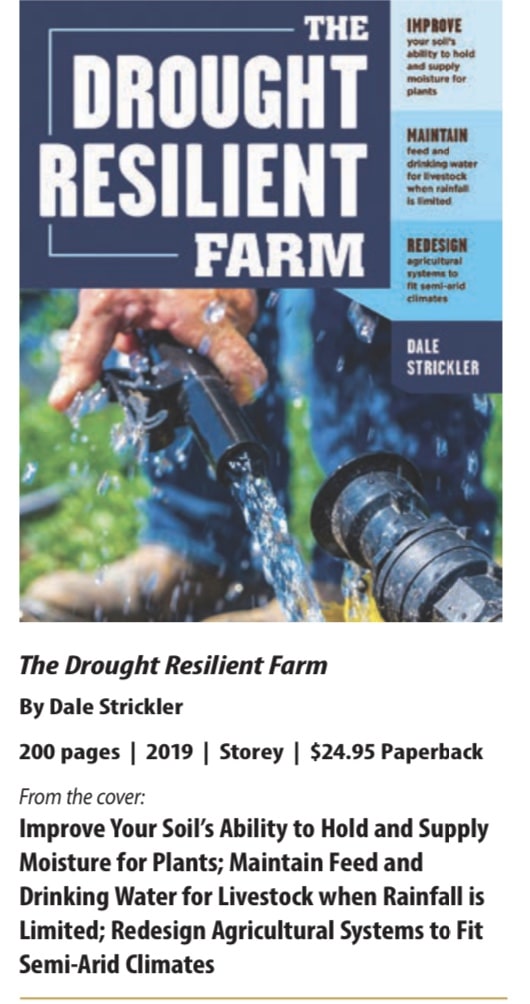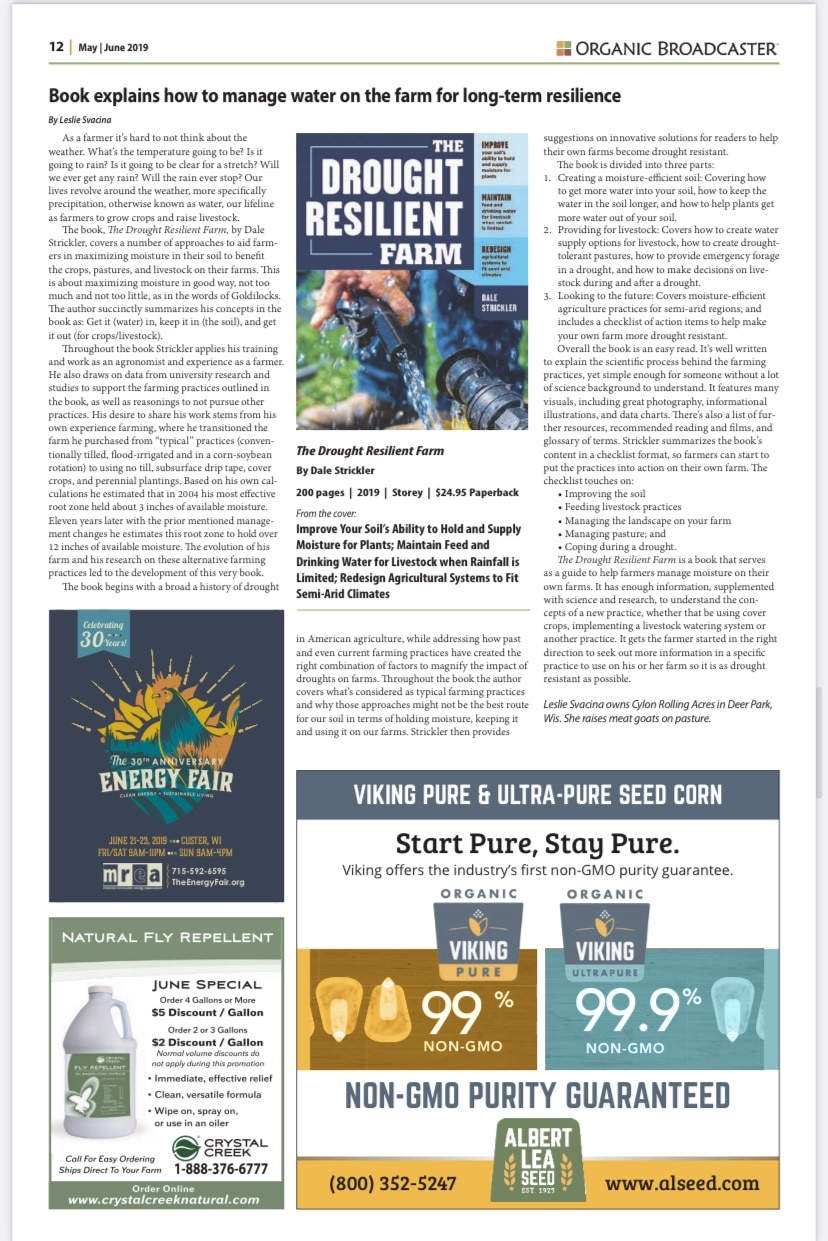
By Leslie Svacina
Published in the MOSES Organic Broadcaster, May/June 2019
As a farmer it’s hard to not think about the weather. What’s the temperature going to be? Is it going to rain? Is it going to be clear for a stretch? Will we ever get any rain? Will the rain ever stop?Our lives revolve around the weather, more specifically precipitation, otherwise known as water, our lifeline as farmers to grow crops and raise livestock.
The book, The Drought Resilient Farm“>The Drought Resilient Farm, by Dale Strickler, covers a number of approaches to aid farm- ers in maximizing moisture in their soil to benefit the crops, pastures, and livestock on their farms. This is about maximizing moisture in good way, not too much and not too little, as in the words of Goldilocks.
The author succinctly summarizes his concepts in the book as: Get it (water) in, keep it in (the soil), and get it out (for crops/livestock).
Throughout the book Strickler applies his training and work as an agronomist and experience as a farmer. He also draws on data from university research and studies to support the farming practices outlined in the book, as well as reasonings to not pursue other practices. His desire to share his work stems from his own experience farming, where he transitioned the farm he purchased from “typical” practices (conven- tionally tilled, flood-irrigated and in a corn-soybean rotation) to using no till, subsurface drip tape, cover crops, and perennial plantings. Based on his own calculations he estimated that in 2004 his most effective root zone held about 3 inches of available moisture. Eleven years later with the prior mentioned manage- ment changes he estimates this root zone to hold over 12 inches of available moisture. The evolution of his farm and his research on these alternative farming practices led to the development of this very book.
The book is divided into three parts:Creating a moisture-efficient soil:Covering how to get more water into your soil, how to keep the water in the soil longer, and how to help plants get more water out of your soil.
The book begins with a broad a history of drought in American agriculture, while addressing how past and even current farming practices have created the right combination of factors to magnify the impact of droughts on farms.
Throughout the book the author covers what’s considered as typical farming practices and why those approaches might not be the best route for our soil in terms of holding moisture, keeping it and using it on our farms. Strickler then provides
suggestions on innovative solutions for readers to help their own farms become drought resistant.
Providing for livestock: Covers how to create water supply options for livestock, how to create drought- tolerant pastures, how to provide emergency forage in a drought, and how to make decisions on live- stock during and after a drought.
Looking to the future:Covers moisture-efficient agriculture practices for semi-arid regions; and includes a checklist of action items to help make your own farm more drought resistant.
Overall the book is an easy read. It’s well written
to explain the scientific process behind the farming practices, yet simple enough for someone without a lot of science background to understand. It features many visuals, including great photography, informational illustrations, and data charts. There’s also a list of further resources, recommended reading and films, and glossary of terms. Strickler summarizes the book’s content in a checklist format, so farmers can start to put the practices into action on their own farm.
The checklist touches on:
- Improving the soil
- Feeding livestock practices
- Managing the landscape on your farm
- Managing pasture; and
- Coping during a drought.
The Drought Resilient Farm is a book that serves
as a guide to help farmers manage moisture on their own farms. It has enough information, supplemented with science and research, to understand the concepts of a new practice, whether that be using cover crops, implementing a livestock watering system or another practice. It gets the farmer started in the right direction to seek out more information in a specific practice to use on his or her farm so it is as drought resistant as possible.
Leslie Svacina owns Cylon Rolling Acres in Deer Park, Wis. She raises meat goats on pasture.


LEAVE A COMMENT
Comments